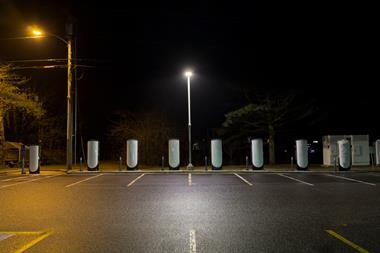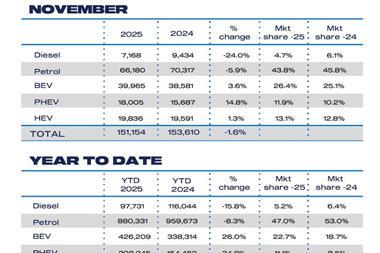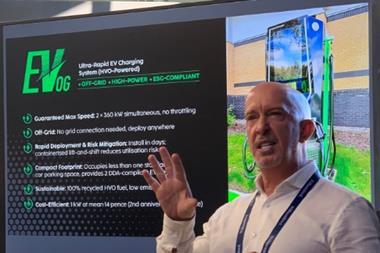
There were 49,220 public electric vehicle charging devices installed in the UK up to October 1, 2023, according to the Department for Transport’s latest quarterly statistics published today (November 1).
The figures show that since October 1, 2022, the number of installed public devices has increased by 14,583 - a 42% increase. The number of rapid charging devices increased by 42%, with an additional 2,717 public devices installed. Based on the new speed categories - introduced last month - there were 8,908 rated 50kW and above, which accounted for 18% of all charging devices.
The new categories are:
- 3 kilowatts (kW) up to 8kW
- 8kW to 49kW
- 50kW to 149kW
- 150kW and above
The largest speed category within the former categories was ‘fast’ charging devices (7kW to 22kW), which accounted for 53% of all charging devices, while the new speed categories, 3kW up to 8kW has the highest proportion of charging devices at 62% (30,737).
The DfT says this apparent expansion of devices seemingly being grouped into lower kW rates under the new definitions can be explained by the high number of ’overnight’ chargers powered at 7.1kW (the standard speed for an ’overnight’ charger). Previously, these were included in the ‘fast’ category in the former speed categories, but now are in the new 3kW up to 8kW category in the new definitions
Compared to 1 July 2023, the total installed devices increased by 5,200, an increase of 12%. There was an increase in the number of public charging devices in the majority of regions in the UK, however both Northern Ireland and the North East of England saw a decrease in the total number of charging devices publicly available in the region.
Across all speeds in total, the DfT figures reveal there is an uneven geographical distribution of charging devices within the UK. Some UK local authorities have bid for UK government funding for charging devices, and others have not. Most of the provision of this infrastructure has been market-led, with individual charging networks and other businesses (such as hotels) choosing where to install devices.
In terms of charger location 22,167 were designated as ’destination’ chargers, representing 45% of all charging devices; while 18,942 were designated as ’on street’ chargers, representing 38% of all charging devices.
The most common location category for charging devices is ’destination’ accounting for 22,167 charging devices or 45% of all publicly- available charging devices. ’On street’ charging devices account for 38% of charging devices or 18,942.
Charging device location categories are defined based on both the physical/type of facility they are located in and who can access this but also the type of charging service they are designed to deliver:
On Street: Charging devices located on residential streets only
En-route: Charging devices located for charging to continue a journey. Located in motorway service areas, service stations, electric forecourts and ferry terminals. Additionally 50kW and above charging devices in hotels, restaurants and attractions
Destination: Charging devices located at the end of an EV journey or where a driver may typically stop for an extended period of time. Consists of both 50kW and above and 49kW and below charging devices located in retail car parks, car parks, leisure, education areas and transport (except ferries), in addition 49kW and below charging devices located at hotels and restaurants
Other: Charging devices which are semi-public with some level of access restrictions such as workplace car parks and dealership forecourts.
London and Scotland had the highest level of charging provision per 100,000 of population, with 193 and 77 devices per 100,000 respectively. In comparison, the average provision in the UK was 73 per 100,000.
Northern Ireland had the lowest level of charging device provision in the UK, with 23 devices per 100,000, followed by the North West and Yorkshire and the Humber with 42 and 46 devices per 100,000 respectively.
When focusing on higher speeds of 50kW and above Scotland had the highest rate of device provision at 18.8 50kW and above charging devices per 100,000, while the average provision in the UK was 13.3 per 100,000; 50kW and above charging device provision was lowest for Northern Ireland with 2.9 50kW and above charging devices per 100,000. The North West was the second-lowest regions with 10.8 50kW and above charging devices per 100,000 respectively.
There was a mixed picture in the regional breakdown across the UK in total charging devices between July to September 2023. London had the greatest increase at 26.9%, while the North East had a decrease of 7.3%. London had the greatest increase in absolute number of devices at 3,592 devices, followed by West Midlands at 347. The North East region has seen a decrease this quarter due to a net decrease of devices in Stockton-on-Tees related to a subset of charging devices being wound down by the charge-point operator.
































